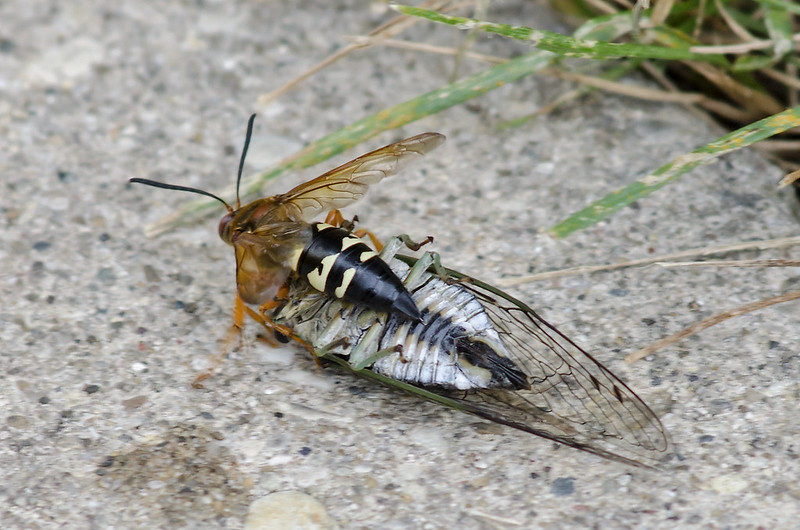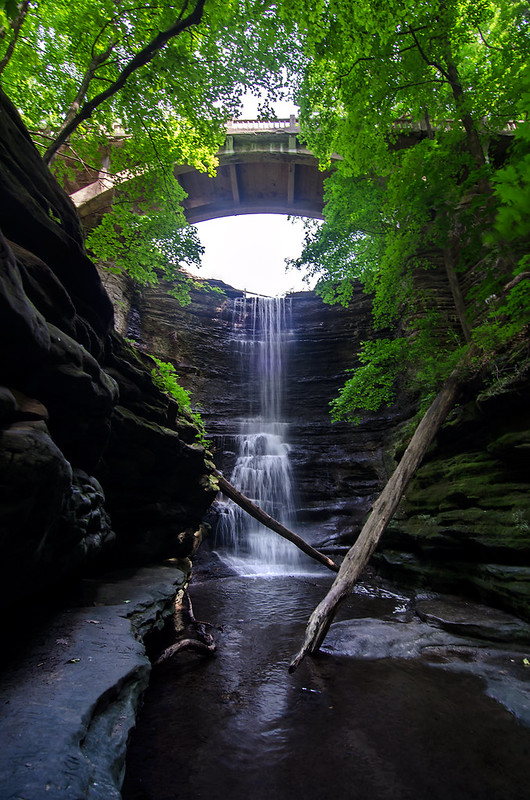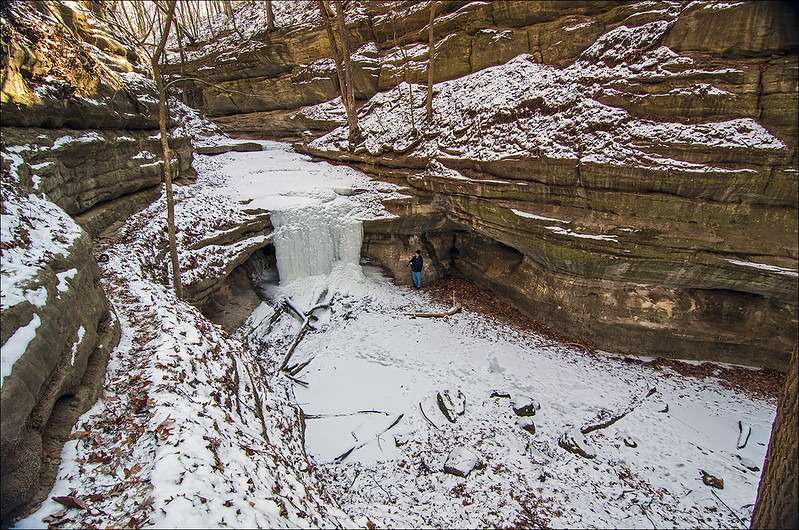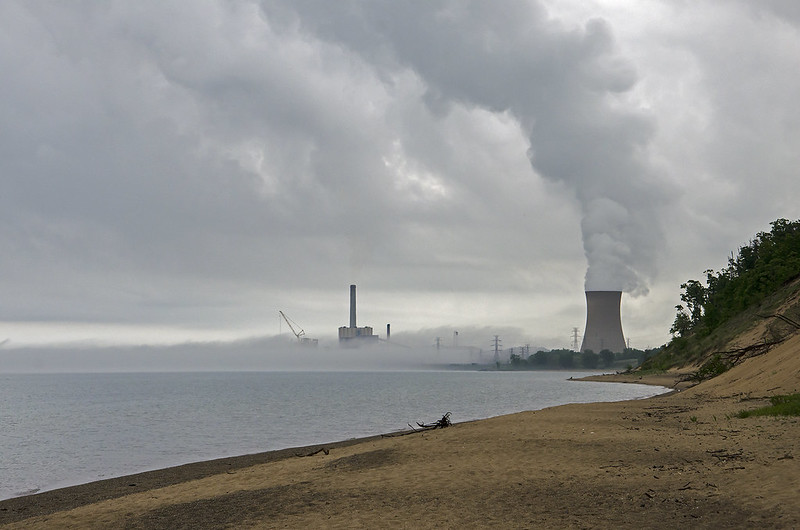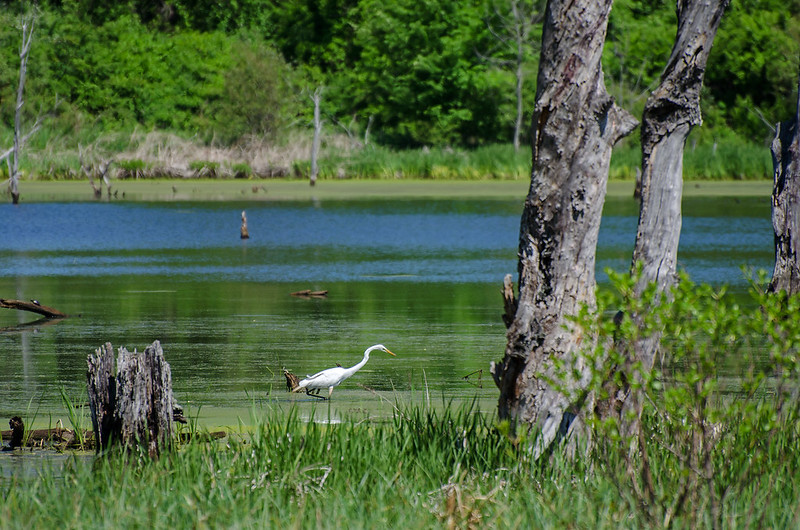
Spanning Sugar Creek since 1876, the 315 foot long West Union covered bridge is the longest (still standing) covered bridge in Parke County, Indiana.
Located in the west-central portion of the state, just north of Terre Haute, Parke County is known as the "Covered Bridge Capital of the World", 31 Covered bridges remain standing in the County - many are still open to traffic. Compare that to Madison County, Iowa (made famous by the 1995 film The Bridges of Madison County), which only boasts six covered bridges.

The West Union covered bridge was built by Joseph Daniels, and uses double Burr Arch construction - one for each span. The foundation is constructed of stone, the bridge of yellow poplar, and the roof painted steel. The construction cost was between $8,000 and $16,000.

Sugar Creek flows beneath the bridge, and more water passes under this bridge than any other covered bridge in the county. Closed to traffic since the 1960's when 10 O'clock Road bypassed the bridge, pedestrians can enjoy a leisurely walk across the spans while enjoying the quiet, rural setting.





